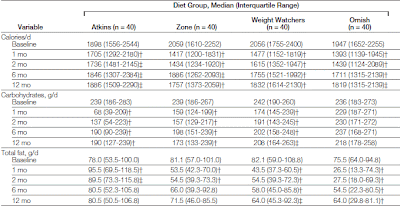Insulin: A-to-Z and More
Well folks, as 2011 draws to a close, it seems the reason for the Asylum's very existence has all but evaporated into thin air. What? You didn't know? Yes indeed! Apparently my work here is done as nobody really believes that carbs cause insulin cause fat accumulation stuff anymore. But I'm hopelessly mired in debunk mode so, of course, I just happen to glance at the insulin levels in studies when I read them, and so it was when I revisited the Dansinger diet study recently. And so, just in case there's even a single person out there who still believes that their low carb diet is working by lowering their insulin levels, I thought I'd start this first ever compilation post here.
OK, I'll knock off the sarcasm now. Yes, I know most of my readers will find this post repetitive of what I've already presented ample evidence for here. But since part of the purpose of this blog in the first place was for me to organize information I gather, I thought having a post like this, that I will update with data from any studies providing relevant information, would be just that sort of thing. Depending on how often I add to this, I may bump it each time I update, or just periodically (I have no intent of this post cluttering feed readers out there every few days!). So, without further ado ...
Dansinger, et.al. JAMA, January 5, 2005—Vol 293, No. 1January 5, 2005—Vol 293, No. 1
Synopsis: A one year study where initially 40 subjects were assigned to one of four popular diet plans and assessed for weight loss and various CVD markers. "After 2 months of maximum effort, participants selected their own levels of dietary adherence."
Subjects: Overweight or obese (body mass index: mean, 35; range, 27-42) adults aged 22 to 72 years with known hypertension, dyslipidemia, or fasting hyperglycemia.
Results: Assuming no change from baseline for participants who discontinued the study, mean (SD) weight loss at 1 year was:
2.1 (4.8) kg for Atkins (21 [53%] of 40 participants completed, P = .009)3.2 (6.0) kg for Zone (26 [65%] of 40 completed, P = .002)3.0 (4.9) kg for Weight Watchers (26 [65%] of 40 completed, P < .001)3.3 (7.3) kg for Ornish (20 [50%] of 40 completed, P = .007)Greater effects were observed in study completers.
Unvortunately baseline data was carried forward and included in the reported dietary intake making it pretty useless, but here it is below anyway.
Conclusions: Each popular diet modestly reduced body weight and several cardiac risk factors at 1 year. Overall dietary adherence rates were low, although increased adherence was associated with greater weight loss and cardiac risk factor reductions for each diet group.
Condensed Results for Weight, Glucose & Insulin (please excuse the different orders in the C&P). Top columns are for baseline values carried forward for all 40 in each group, bottom columns are for completers (21 Atkins, 26 Zone & WW, 20 Ornish)
In this study, Zone -- sometimes considered low-carbish -- had the greatest reduction in insulin levels. Interestingly changes in fasting glucose levels at 12 months varied inversely with carbohydrate consumption, but this is not significant -- check out the (SD) in parentheses ... the changes were quite variable! Which just goes to show that while diet can influence fasting insulin and glucose levels, the effect is far from predictable and appears not to be related to postprandial glucose and insulin levels due to carbohydrate intake.
Scatter plot of individual data for all subjects (baseline carried forward) at 1 year:
Symbols: squares = Atkins, circles = Zone, diamonds = WW, triangles = Ornish
Regression lines: solid = Atkins, long dashed = Zone, short dashed = WW, dash-dot = Ornish
Percent change in insulin level correlates with weight change. Note the scatter, however



Comments
Christopher Gardner of Stanford did A-to-Z (Atkins, Traditional, Ornish, Zone).
You'll notice that Atkins, WeightWatchers,Ornish, Zone doesn't spell ATOZ.
LEARN is a low-fat diet developed by Kelly Brownell of Yale.
* http://jama.ama-assn.org/content/297/9/969.abstract
http://www.youtube.com/watch?v=eREuZEdMAVo&noredirect=1
Fast forward to 11.42
information. I'm glad that you just shared this helpful info with us. Please stay us up to date like this. Thank you for sharing.
Here is my site; diets that Work
Post a Comment
Comment Moderation is ON ... I will NOT be routinely reviewing or publishing comments at this time..